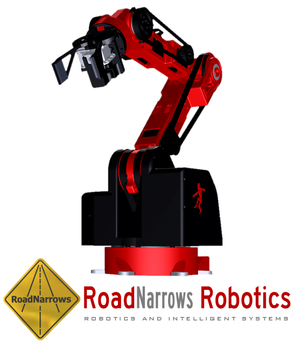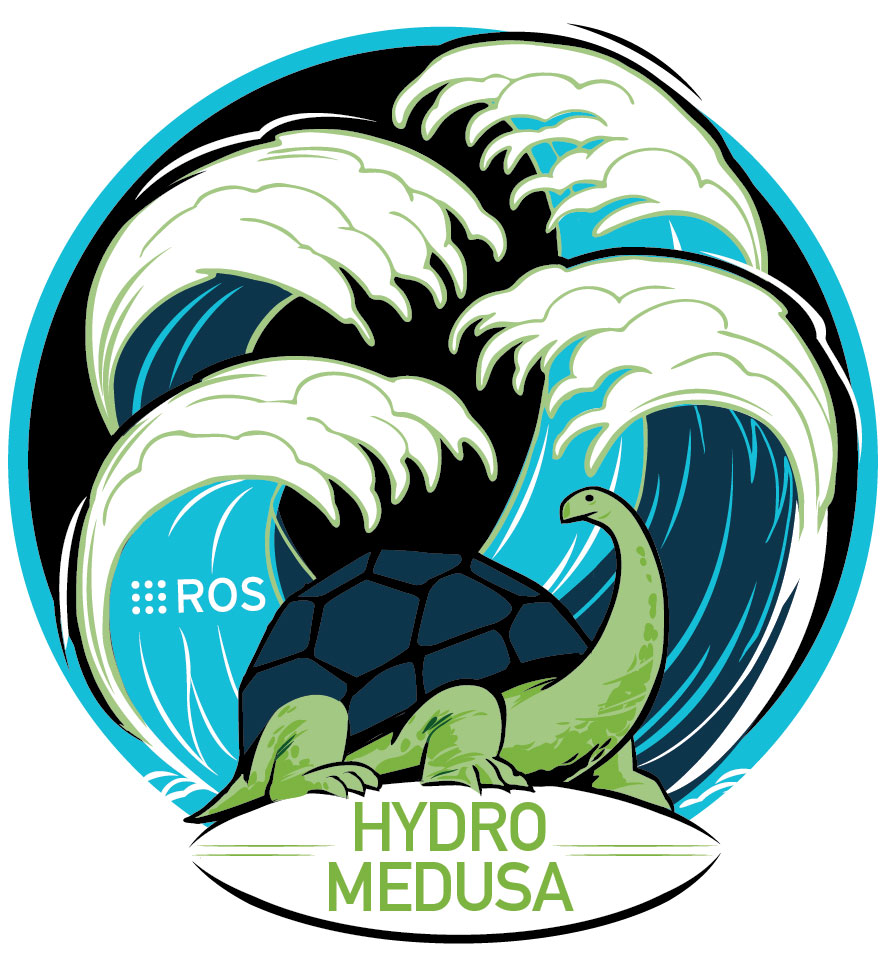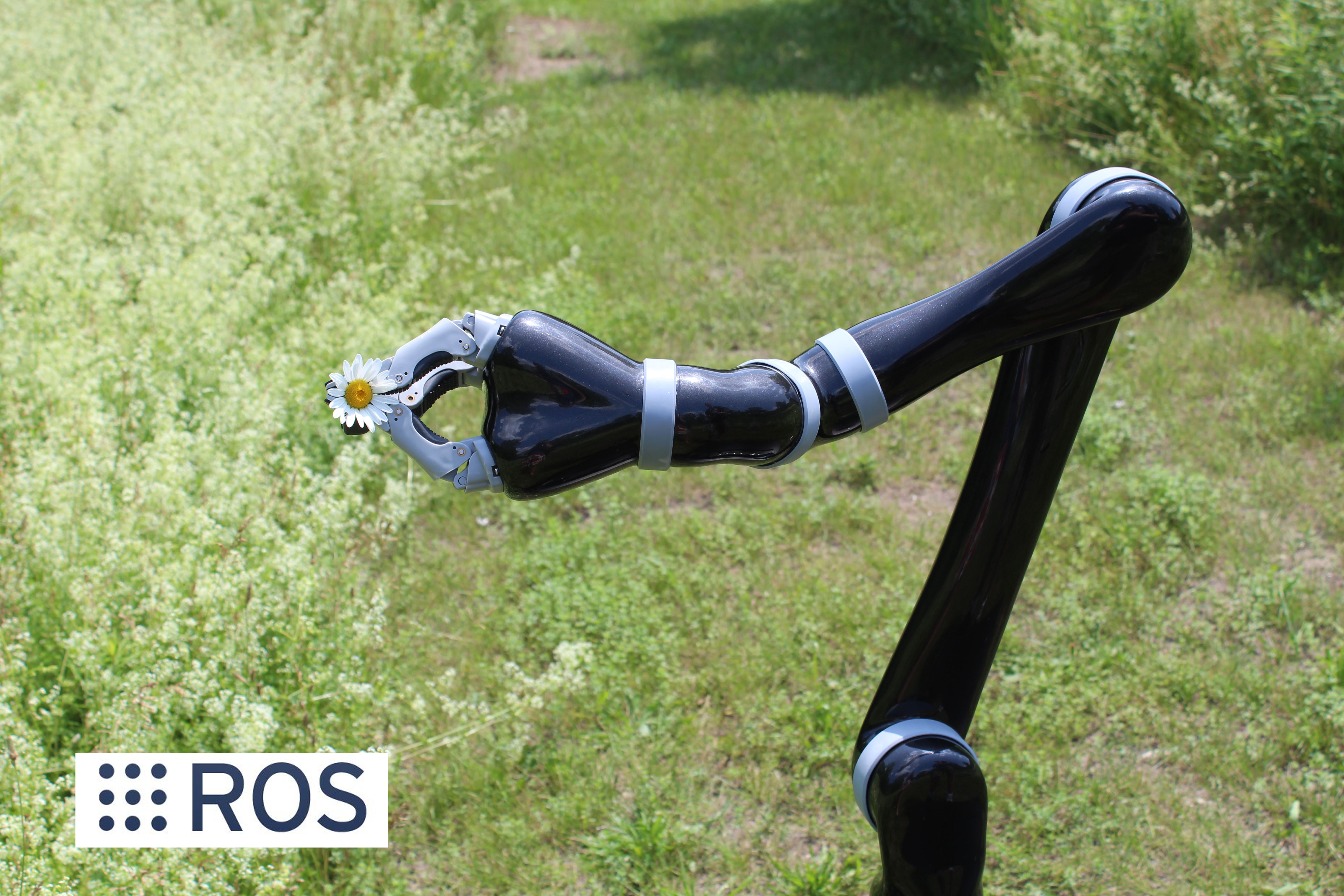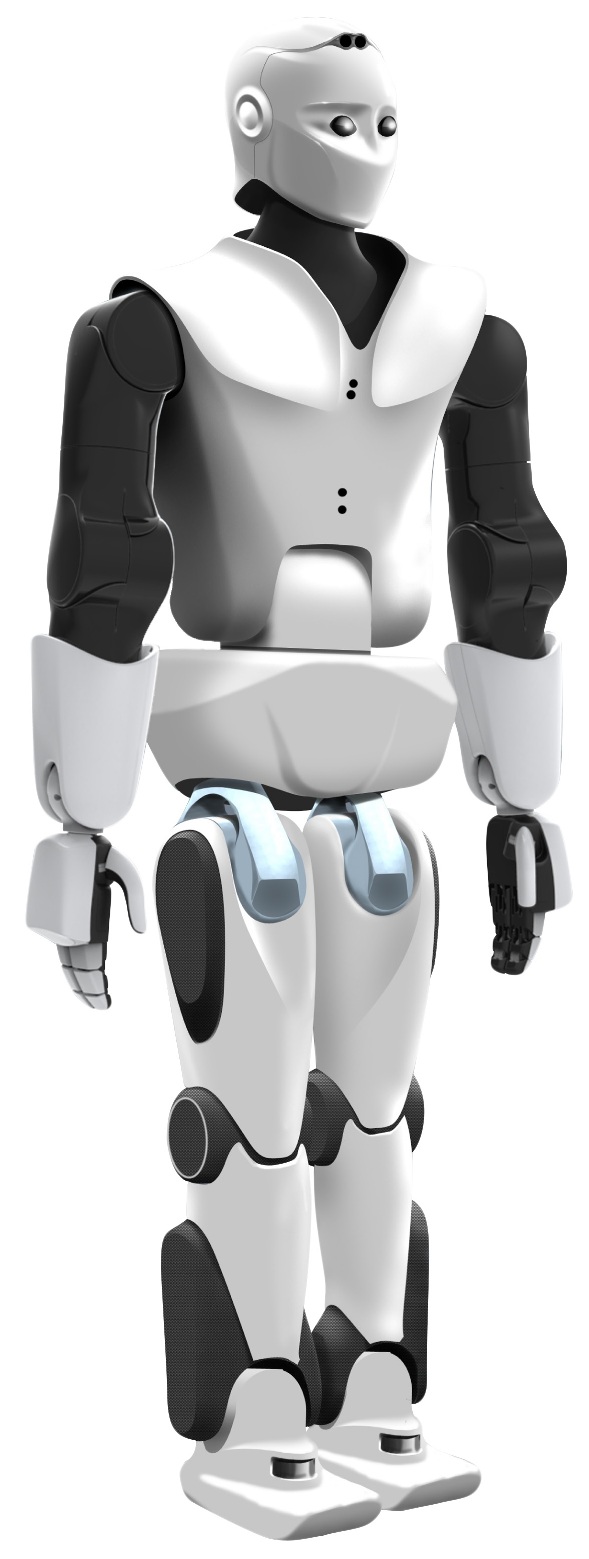
RoadNarrows is pleased to announce the compatibility of its Hekateros family of robotic manipulators with ROS, the Robot Operating System, making them easier than ever to use in research and light manufacturing. Developed by the Open Source Robotics Foundation, ROS provides a standardized framework allowing easy integration of robots, sensors, and computing platforms to solve complex problems through the combination of simple ROS-enabled components.
Hekateros manipulators are available for sale in 4DOF (articulated planar arm) and 5DOF (articulated planar arm + rotating base) configurations. The Hekateros platforms are ideal for applications and research in robotic control systems, visual-servoing, machine intelligence, artistic installations, and light manufacturing.
Standard Hekateros models have an impressive range of motion (see below) with a fully extended reach of approximately 1m and a payload capacity of nearly 1kg. Each arm can be special-ordered to meet custom length and loading requirements in order to suit the needs of almost any application. All versions of Hekateros come with a default end-effector based on the RoadNarrows Graboid gripper, with a built-in webcam for visual-servoing applications.
The wrist and rotating base both provide continuous rotation while passing power and data (USB, video, Dynamixelâ„¢ ,GPIO and I2C) to the processor in the base. Open mechanical and electrical interfaces allow for the integration of additional sensors and actuators beyond those included on the standard arm. Add-ons may be integrated directly into the base of the robot, at an equipment deck on top of the rotating base, or at the open end-effector interface.
Hekateros manipulators are network enabled, and onboard processing is powered by the 1GHz ARM processor of the Gumstix® Overo® FireSTORM COM. This allows for autonomous operation of Hekateros in isolation from a computing infrastructure, or the ability to connect Hekateros with a powerful computing array for computationally intensive tasks. Multiple manipulators may also be configured for simultaneous and cooperative operation, and can easily be integrated with a variety of networked platforms and sensors.
The Hekateros platform is built around the powerful Dynamixelâ„¢ actuators by ROBOTISâ„¢, which provide many advanced features such as: continuous rotation through 360 degrees; high-resolution encoders; excellent torque, position, and velocity feedback and control; and an extensive low-level interface to monitor the servo state and health. On top of the Dynamixel firmware, RoadNarrows has built libraries and utilities that expose all of the features of Dynamixel servos through a clean and uniform C++ interface. Key features of the RoadNarrows Dynamixel library include virtual odometry for continuous rotation, a software PID for motion control in continuous rotation, and a command line utility (dynashell) for accessing and controlling a chain of Dynamixel servos. The Hekateros ROS packages bring the full power of Dynamixel actuators to ROS.
The Hekateros ROS interface exposes all functionality of the Hekateros manipulators as services, subscriptions and action servers. The control interface also publishes extensive state data on every aspect of the arm. The hekateros_control node conforms with ROS standards, such as the ROS industrial interface and MoveIt! motion planning suite.
In addition to the hekateros_control node, users of the Hekateros ROS interface are also provided with:
a graphical interface (hekateros_panel) that provides easy access to every feature of the control node,
numerous launch files including live demos, simulations, and integration with advanced motion planning libraries, and
extensive documentation in the wiki.
More detailed information about the Hekateros ROS interface is available on the wiki pages on GitHub.
The Hekateros platform was developed thanks in part to the support of the NSF SBIR program under grant number 1113964.
Please direct all inquiries to info@roadnarrows.com.
About RoadNarrows LLC
Based in Loveland, Colorado, RoadNarrows is a privately-held robotics and technologies company founded in 2002. RoadNarrows Research & Development develops intelligent peripheral components and accessories, including cameras, mobile sensor architectures, and open-source platform software, to give robotics researchers advanced time- and resource-saving tools. RoadNarrows' retail operation sells and provides technical support for some of the most popular robotic product lines used by the academic and research community world-wide.
For more information, visit: www.roadnarrows.com.
Links:
The Hekateros project main page: http://www.roadnarrows.com/Hekateros/
Hekateros for sale on the RoadNarrows Store: http://www.roadnarrows-store.com/hekateros-arm.html
Hekateros' range of motion on YouTube: https://www.youtube.com/watch?v=13lpd655wC4
The RoadNarrows Graboid Gripper for sale on the RoadNarrows store: http://www.roadnarrows-store.com/roadnarrows-graboid-series-d.html
The Gumstix® Overo® FireSTORM COM, used in Hekateros, for sale on the RoadNarrows store: http://www.roadnarrows-store.com/gumstix-overo-firestorm-com.html
The Gumstix® main page: https://www.gumstix.com/
Dynamixelâ„¢ servos by ROBOTISâ„¢ for sale on the RoadNarrows Store: http://www.roadnarrows-store.com/manufacturers/robotis/dynamixel-servos.html
The ROBOTISâ„¢ main page: http://www.robotis.com/
The MoveIt! main page: http://moveit.ros.org/
The Hekateros ROS interface documentation wiki pages on GitHub: https://github.com/roadnarrows-robotics/hekateros/wiki
NSF GRANT SUPPORT AND DISCLAIMER - The project described above is supported by Grant Number 1113964. from the National Science Foundation. Any opinions, findings, and conclusions or recommendations expressed in this material are those of the author(s) and do not necessarily reflect the views of the National Science Foundation.










